
Table of Contents
While it has taken after different influences, the gothic style is deeply rooted in the unique architectural designs that rose to popularity during the Middle Ages.
During that period, important structures like cathedrals and castles used gothic designs, characterized by rib vaults, towering roofs, as well as stained glass and rose windows.
Likewise, jewelry and fashion styles followed the same concept and had similar features, with tapered forms, pointed edges, and protracted shapes.
They also tend to have intricate designs that are typically patterned after stained glass. However, these designs have evolved over time, resulting in the different variations you see today.
Let’s take a look at what makes a piece of jewelry gothic, and where you can buy these unique designs. Keep reading for an in-depth look into the history and origins of this style as well.
Styles And Types of Gothic Jewelry
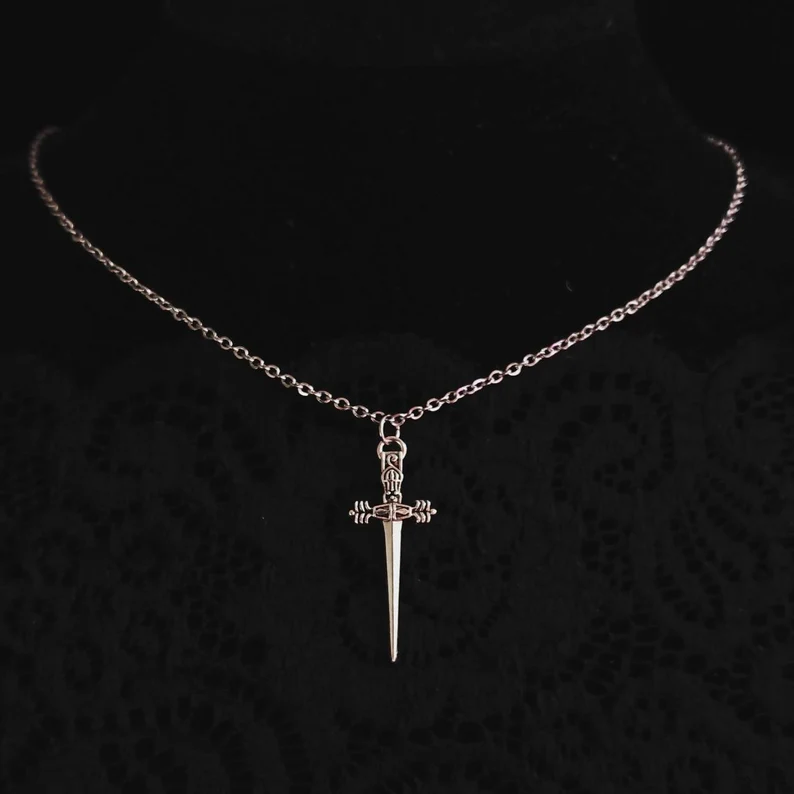
Today’s gothic jewelry reflects the transitions it underwent over the years and shows a variety of styles. Some revolve around rebellion, using iconic imagery such as iron locks or nails, while others take on classical or historical emblems such as crosses or occult symbols.
Medieval goth calls to mind the intricate designs of gothic architecture. As such, these jewelry
pieces would often have heavy embellishments and incorporate symbols closely associated with love or religion.
Androgynous gothic jewelry offers styles that both men and women can wear. They often incorporate common symbols of the subculture and use spikes, leather, and studs in the design.
On the other hand, Fetish goth is more heavily involved in the use of lace, handcuffs, and bandages, as well as symbols associated with witchcraft and the supernatural.
There is also a style dubbed Vampire Goth, which revolves around the concept of vampires and other creatures of the night. It uses vampiric elements like coffins, bats, cobwebs, and other symbols strongly associated with life and death.
Overall, gothic jewelry focuses on showing a sense of uniqueness while reflecting the somewhat dark and gloomy look typical of gothic literature.
Here are some of the more popular styles and types used in gothic jewelry designs:
1. Cross
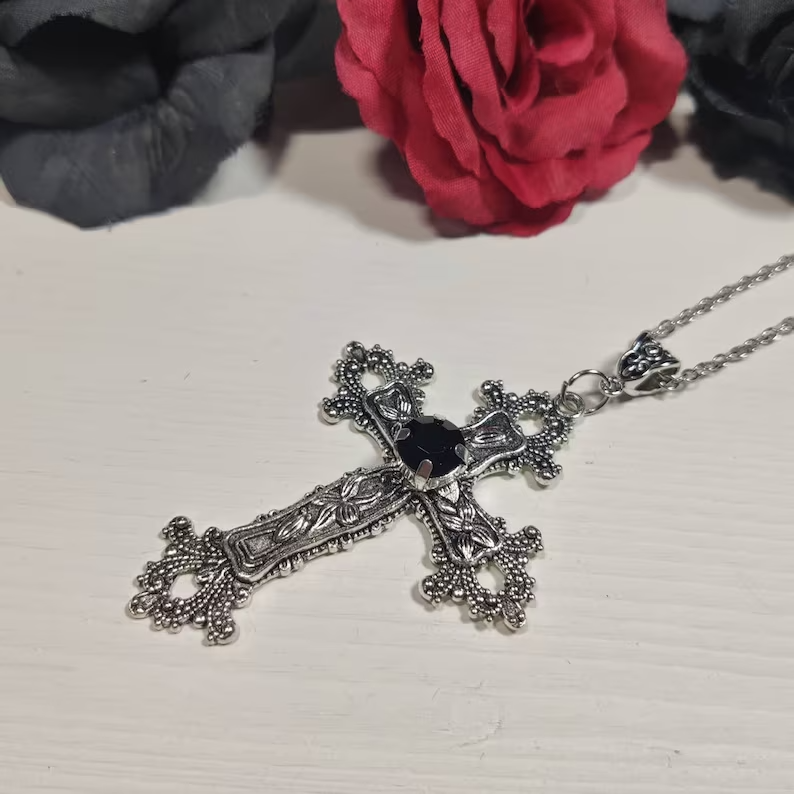
Since many gothic jewelry designs take inspiration from medieval structures like churches and cathedrals, it is not surprising to see designs shaped like a cross.
Typical of the gothic style, these crosses are usually made very intricately, showing the finest details in different variations.
Gothic crosses differ from those used in the Christian religion because they have different meanings for the wearer.
Aside from the symbolism being darker and more mysterious, it also varies depending on the execution. For example, an inverted cross represents death, while a Celtic cross may stand for everlasting life.
2. Ankh
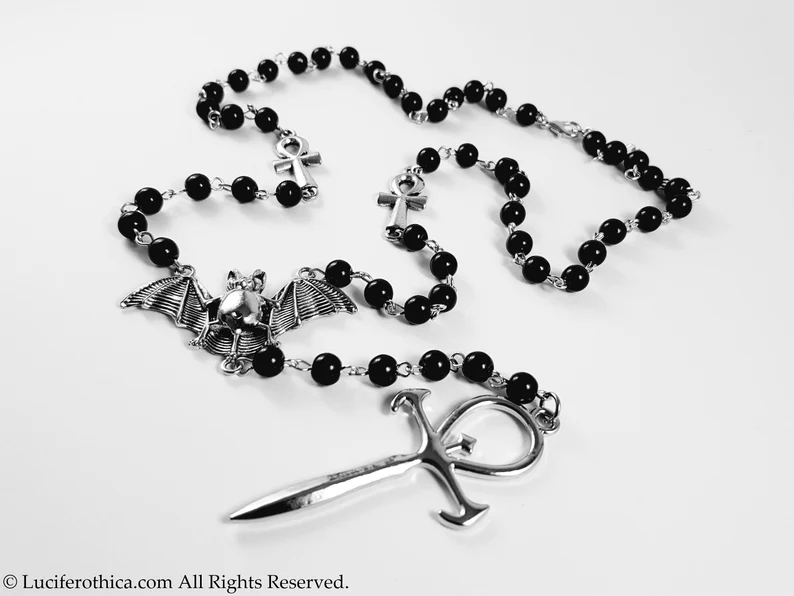
Sometimes called the key of the Nile, the ankh is a symbol in ancient Egypt that represents life. It was such an important icon in Egyptian culture that it would often be shown in the hands of important figures like pharaohs and kings to preserve their immortality.
It is also depicted in temples along with major Egyptian gods like Ra, Iris, and Osiris.
The ankh looks like a cross but has a teardrop-shaped loop on the upper vertical arm. Traditionally, it would be placed inside the sarcophagi, or the stone coffin used in ancient times,
to ensure life after death. Aside from being acknowledged as a hieroglyph, the ankh also shows strong similarities to the Knot of Isis.
3. Heart
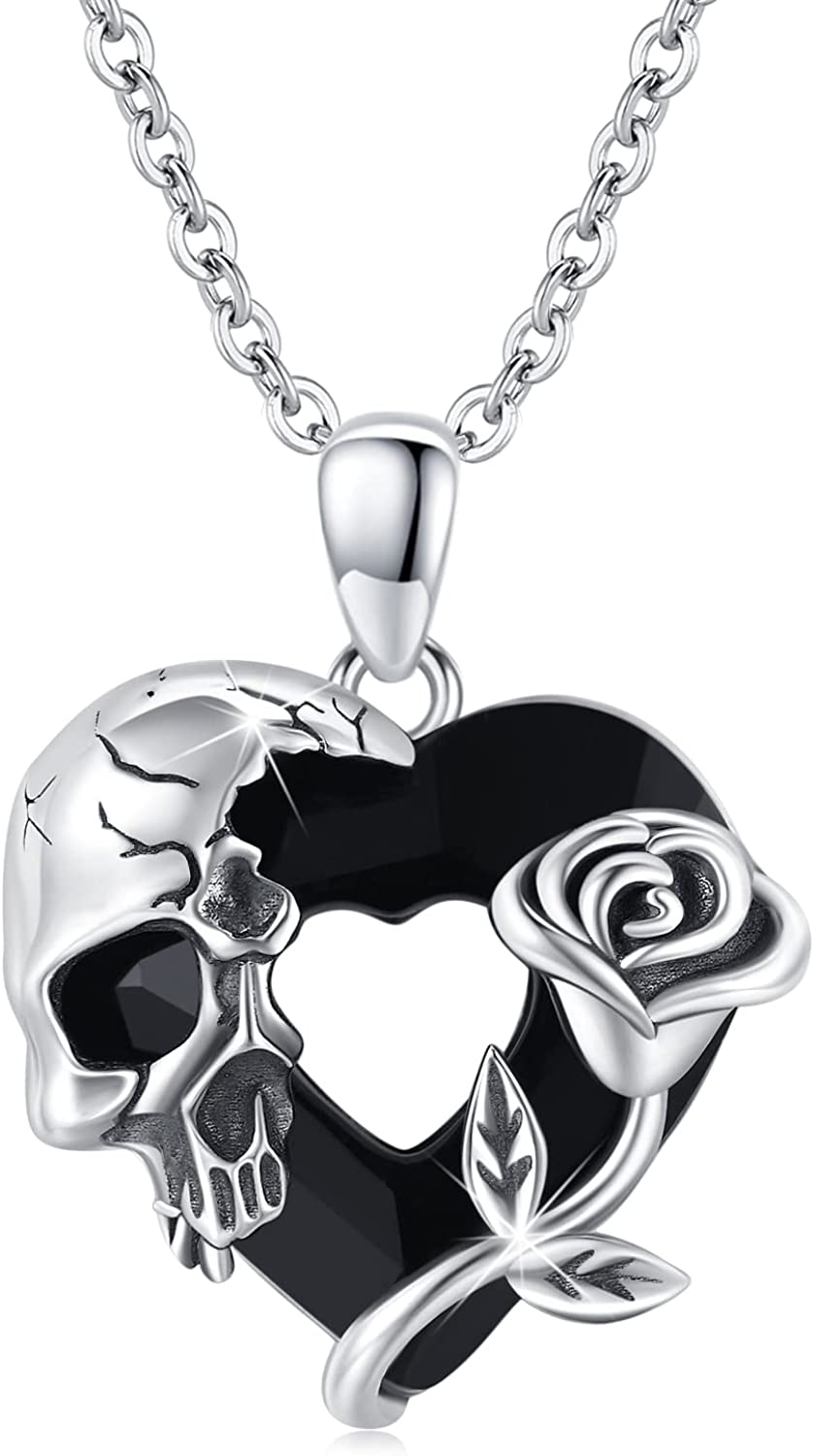
It may seem surprising to see hearts used in a subculture specializing in gloom and doom. However, it becomes easier to understand when you consider its roots in gothic literature that includes stories of ill-fated romance.
Accordingly, these jewelry pieces rarely depict the heart in a positive light. Other gothic symbols and icons would also often be incorporated into these designs.
As such, you would often see pieces showing the heart pierced by a sword, surrounded by thorns, or covered by a skull.
4. Dagger
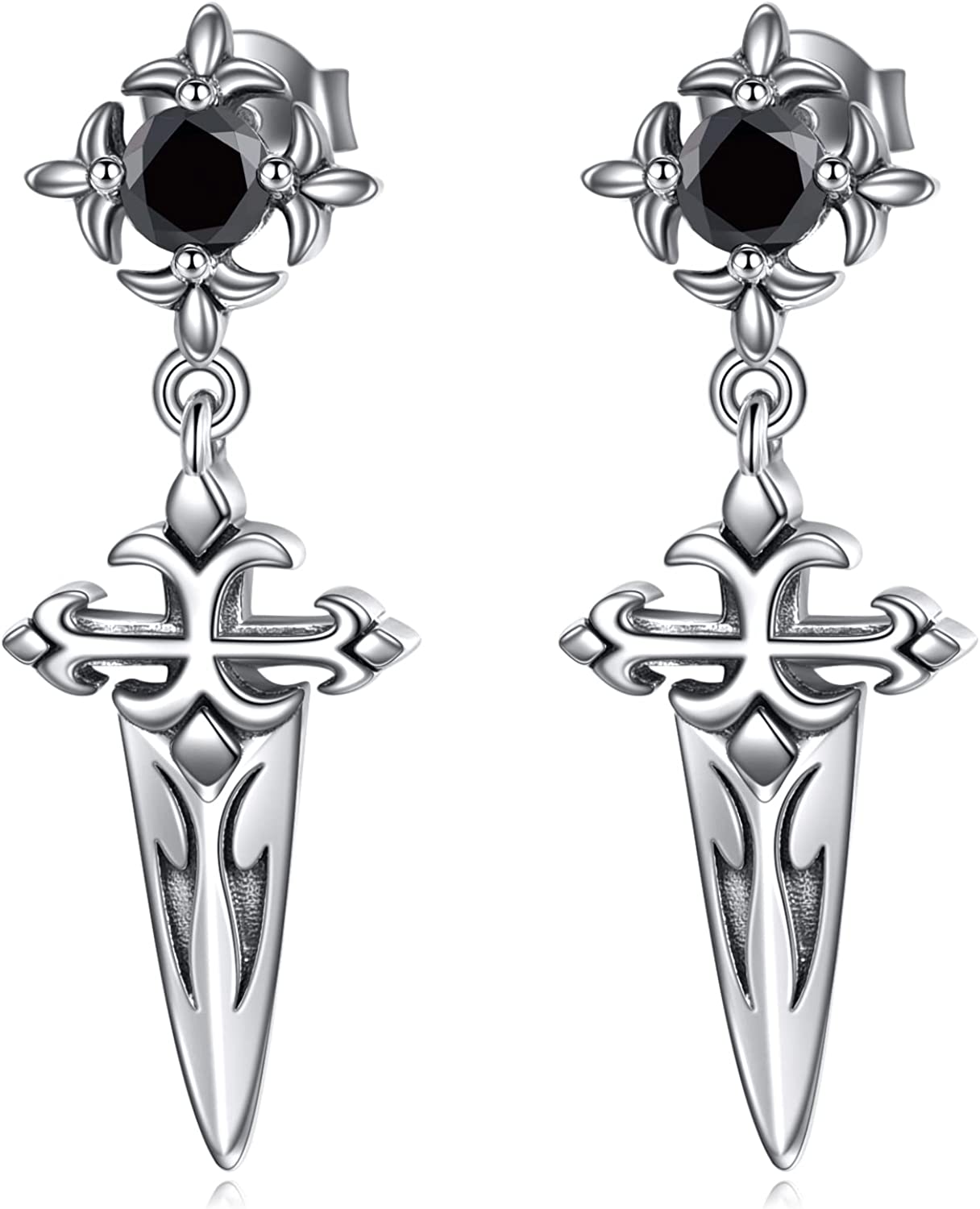
Another popular design for gothic jewelry is that of a dagger or a sword. It is an apt representation of the running theme in the gothic subculture of love and suffering, which is often interspersed in popular gothic literature stories.
Some designs use the modern structure of a dagger and apply it on earrings, giving off the impression that the blade has pierced through the skin when worn.
Others incorporate medieval styles and use them for other jewelry pieces like pendants or bracelets.
5. Skull
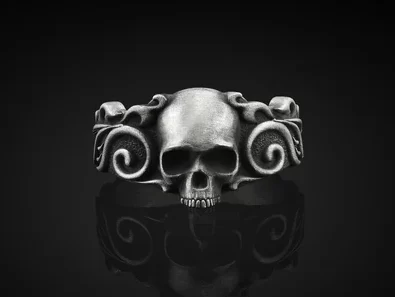
The skull is dark and gloomy because it is often seen as a symbol of death and the afterlife. While this is in line with the typical gothic appeal, the skull also has other meanings.
For example, medieval philosophers also considered it a representation of human wisdom because it houses the brain and protects it from damage.
For the modern goth, the skull serves as a reminder of mortality. Because death is inevitable, people should cherish life and live every day as if it’s their last.
6. Rose
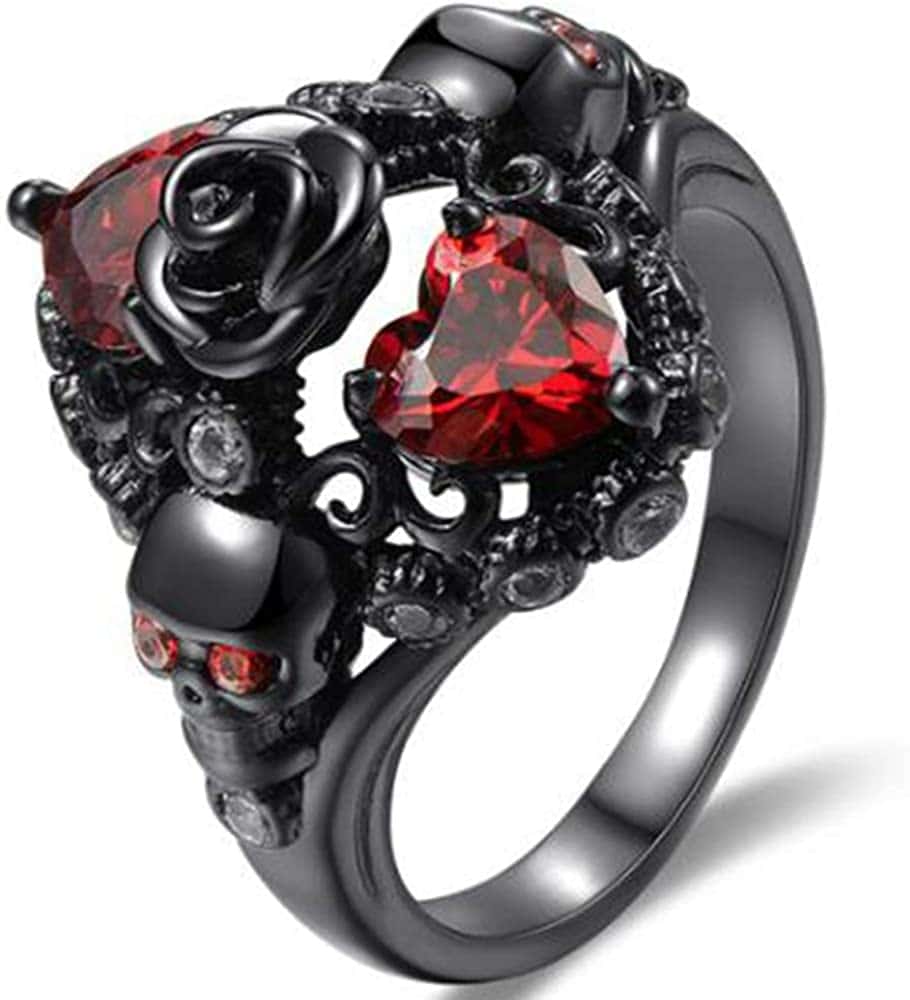
Roses are also often used in gothic jewelry designs, but they are shown in only two colors: black or red. The black rose symbolizes death, grief, rebirth, and new beginnings. In some cases, it can also symbolize rebellion and strength.
On the other hand, red roses can represent the dark romance often portrayed in gothic literature and music.
Aside from resembling the color of blood, they also have thorns hidden behind their beauty, which symbolizes the bleak atmosphere that accompanies these works of art.
7. Bats
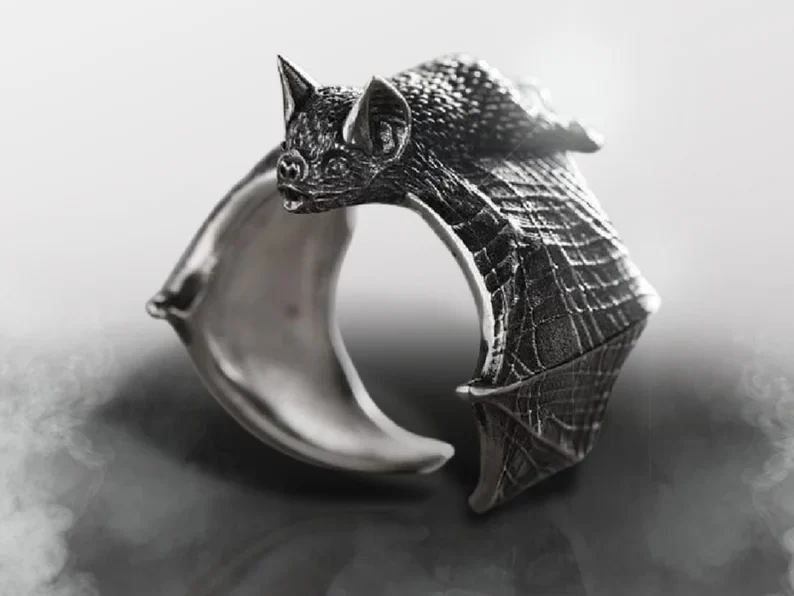
As a popular representation of vampires and being creatures of the night themselves, bats have become almost synonymous with gothic jewelry.
Because of their ability to sense things more clearly in the dark, they exude a dark and mysterious vibe that is precisely in tune with the goth subculture.
Bats also represent death, transition, and new beginnings. Because of their nocturnal habits, they emerge from their caves only at night, seeming as if they were reborn.
8. Pentagram
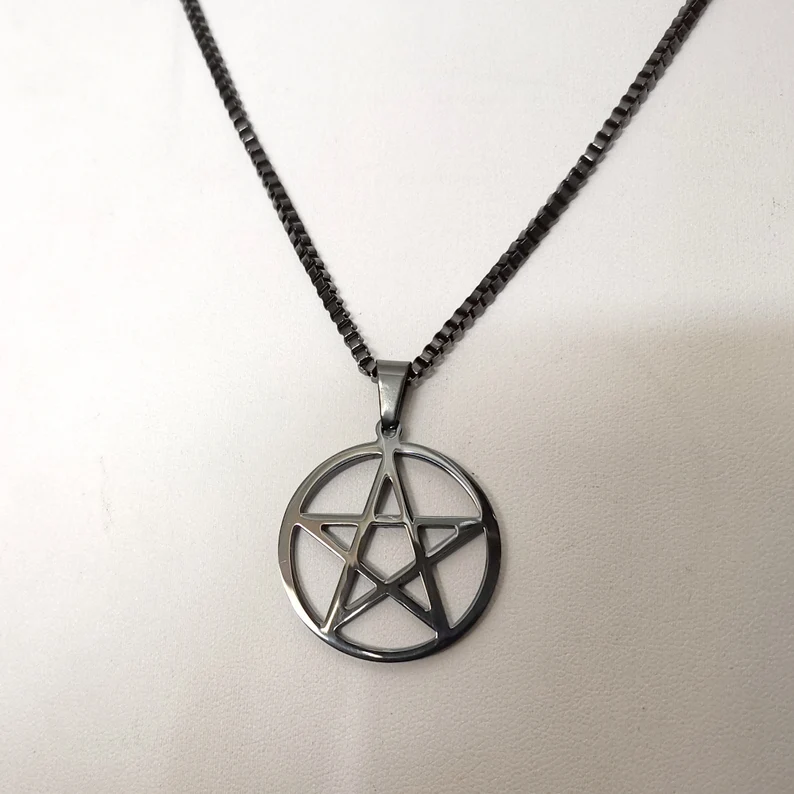
Also called the pentacle, the pentagram is illustrated as a five-pointed star surrounded by a circle. These five angles represent the five elements of earth, fire, air, water, and spirit.
When drawn upside down, the imagery is often associated with Satan. However, the original pentagram icon originates from pagan traditions, representing wisdom and magic. The Pagans used it as a symbol of protection.
Characteristics and Features of Gothic Jewelry
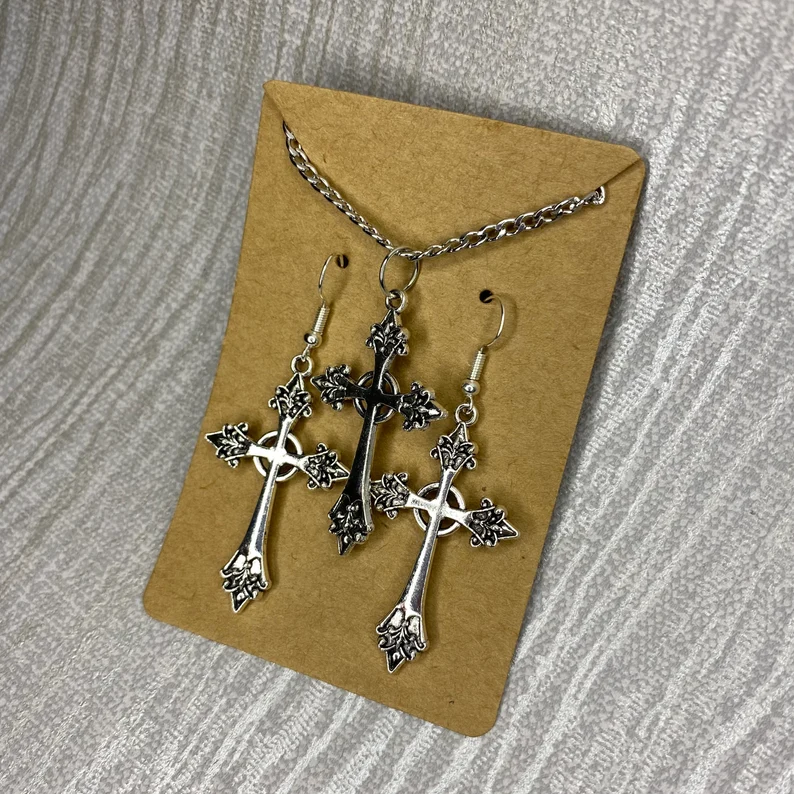
Common materials used for gothic jewelry are silver, white gold, or platinum, highlighting the style’s preference for black and white motifs. These colors are chosen for a reason, and that is because gothic fans see themselves as children of the night. Thus, black signifies the darkness of the night, while white stands for the brightness of the moon.
This is also why yellow materials, like yellow gold, are typically avoided, except for use as small accents – because this shade symbolizes the sun, which is the opposite of the moon. In the same vein, gothic jewelry rarely uses warm and bright shades as these represent the daytime, except for the color red because it resembles blood.
The gemstones also follow this motif, making crystals like onyx a favorite choice among gothic jewelry designers. However, despite their varied colors, it is not unusual to see other gemstones
like rubies and emeralds also being incorporated into gothic jewelry pieces. This style is inspired by the stained-glass designs and rose windows that are common in gothic architecture.
Aside from precious metals and gemstones, lace and leather are also popularly used for making necklaces and bracelets. These jewelry pieces would often be adorned with spikes and studs, inspired by the medieval towers of gothic architecture and highly favored by fans of this subculture.
Gothic History and Origin
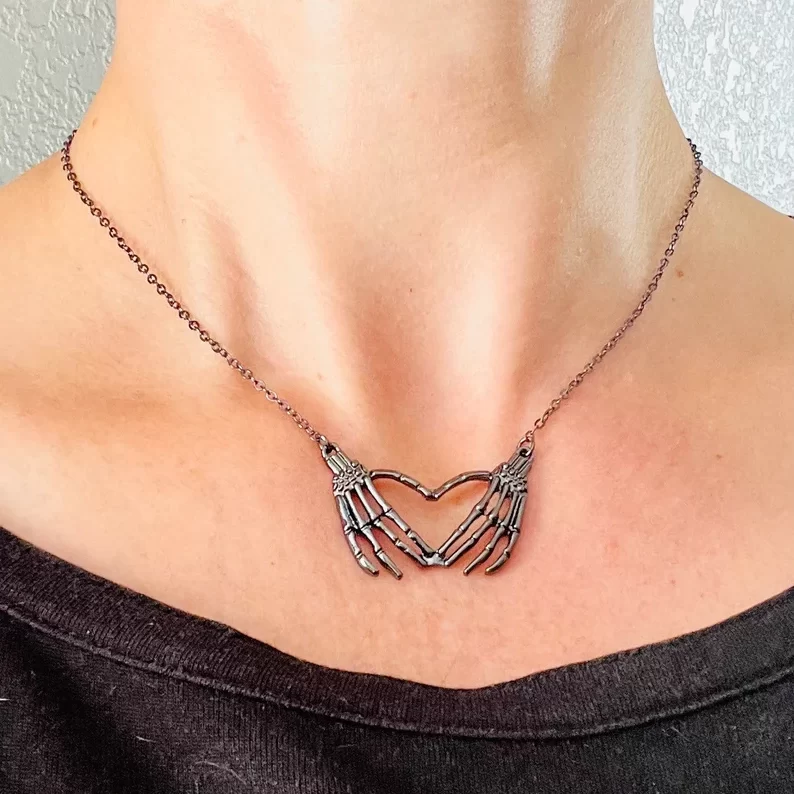
The term goth was initially used to refer to a nomadic tribe of Germanic descent, known as the Visigoths, who rebelled against the Roman empire from the late 300 to early 400 AD. Their efforts were instrumental in the downfall of this empire that had existed for over a thousand years.
As the Goths rose to power, they also ushered in the start of the medieval period. Thus, the Goths became closely associated with large and imposing structural designs that were prevalent during that time.
Some of the more notable Gothic buildings still intact today are the Milan Cathedral in Italy, Westminster Cathedral in England, and the Cologne Cathedral in Germany.
However, the term initially emerged as a derogatory description of these atypical architectural designs.
Coined by Italian painter and art historian Giorgio Vasari, the word “gothic” was used to depict these works as ugly, debased, and barbaric since they did not conform to the aesthetic standards of that time.
The meaning of the term changed during the 18th and 19th centuries when a genre of romantic yet dark and gloomy literature rose to popularity. Despite their bleak setting, these stories captured the readers’ imaginations by describing scenic locations in detail, employing surprising twists and turns, and creating an overall impression of mystery, fear, and uniqueness.
Some of the famous works under this genre include Robert Louis Stevenson’s “The Strange Case of Dr. Jekyll and Mr. Hyde”, Mary Shelley’s “Frankenstein”, and Edgar Allan Poe’s “The Murders in the Rue Morgue”. These stories often took place in gothic structures, such as the castle described in Bram Stoker’s “Dracula”.
The carvings, crevices, and shadows common in gothic architecture served as the perfect backdrop to play off the aura of mystery and darkness that these novelists were aiming for. As gothic structures were always featured in these popular stories, the genre eventually became known as “Gothic fiction”.
Evolution of Style and the Emergence of Gothic Subculture
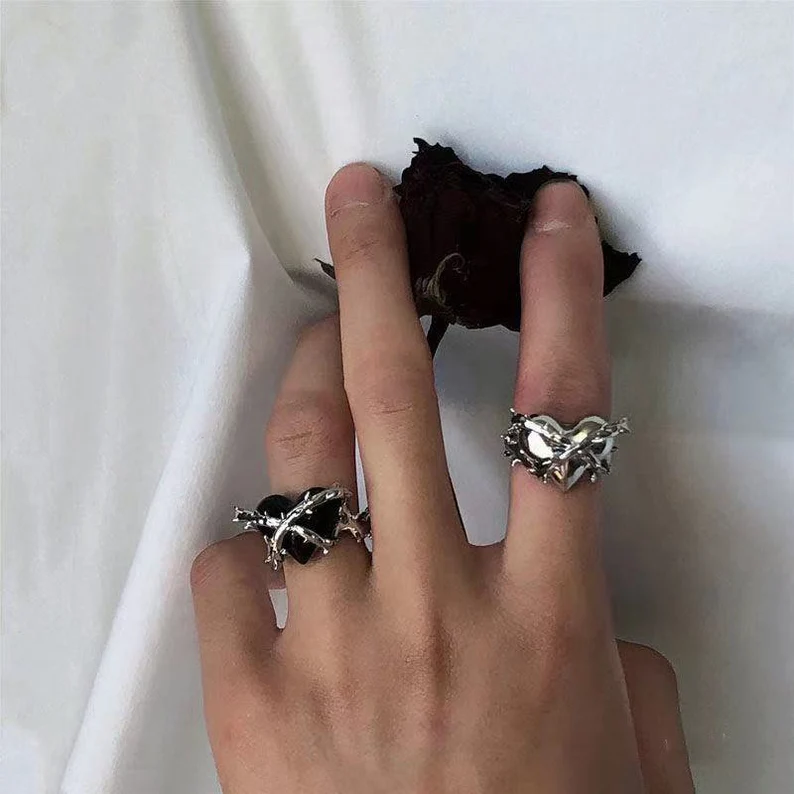
At present, the meaning of the word “goth” has very little to do with the powerful tribe that toppled the Roman empire. Instead, it is more closely associated with the gothic literature that emerged many years later.
As such, goth has been characterized by the dark and gloomy imagery of gothic fiction and has evolved into a subculture with its own music, fashion, and aesthetic style.
From the 13th to the 15th century, gothic jewelry designs were inspired mainly by the sharp edges and intricate designs of gothic architecture.
It underwent a change during the Victorian era, getting a more refined look with an emphasis on femininity, using sophisticated metalwork and smoother shapes.
However, this was not the final look for gothic jewelry and the gothic style in general. It again transformed during the 1970s in response to the social upheaval during that time.
It gathered characteristics from different youth subcultures, such as steampunk and death rock. It reflected rebellious views, feelings of detachment from the real world, and the growing interest in a fictional society during that time.
After lifting elements from various eras – from Edwardian and Victorian fashion to cyberpunk, fetish wear, cosplay, and rave, the result is a very eye-catching ensemble.
The style is often characterized by dark make-up that contrasts with pallid skin stones, unnatural hair colors, crimped and spiky hairstyles, and unusual fashion choices using fishnets, PVC, and latex. Some would also incorporate tattoos and piercings, giving off a generally dark appeal as a hallmark of goth membership.
Wrapping Up
The gothic subculture takes inspiration from different influences which span several centuries. This includes the medieval architecture of the 12th century, the dark romantic literature of the 18th and 19th centuries, the refined fashion of the Edwardian and Victorian eras, and the rebellious period of the 1970s.
Because of these multiple influences, gothic fashion and jewelry have many variations and cannot be pinned on just one look or style.
However, they have one thing in common: they are always unique, eye-catching, and exude a dark and mysterious vibe. If you’re looking for more information, check out our article comparing the gothic and emo styles.










